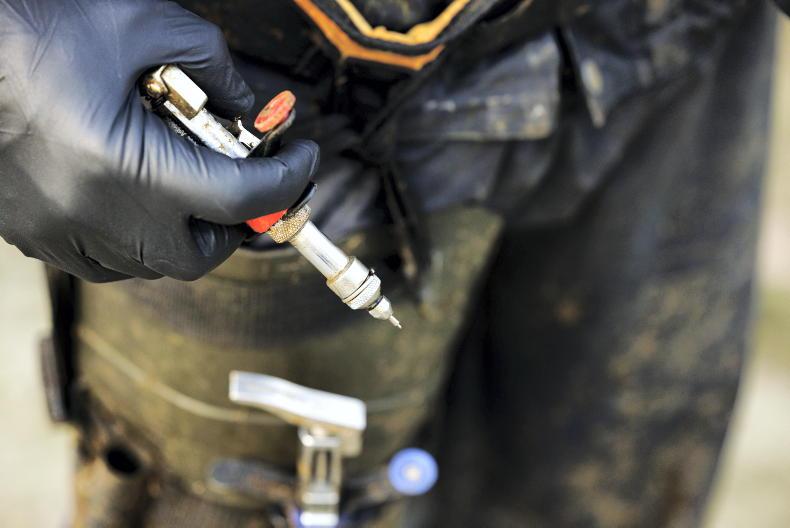The number of TB reactors identified in the 11 months up to 3 December 2023 exceeded 26,600 head, with yearly reactor numbers now the highest they have been in 15 years.
The extent of the TB resurgence over the past decade is shown in provisional Department of Agriculture figures, which put 2023 reactor numbers at 70% higher than they were a decade ago, when disease rates were falling.
Around 61% of the cows identified as reactors so far this year have been dairy cows, which is broadly in line with dairy’s makeup of the national herd.
Dairy
The number of dairy TB reactors has increased each year since 2013 to hit 16,333 to date this year, while reactor numbers in suckler herds have had ups and downs.
The 6,666 sucklers which went down with TB up to the beginning of December make 2023 the second highest year for suckler reactors in the past decade.
There were also 17% more herds which went down with the disease this year than there were in 2022.
Minister for Agriculture Charlie McConalogue suggested that reactors are spending less time on farms after going down in tests, despite the rise in disease levels.
“The national average removal time from test to slaughter is now 17.8 days, which has reduced from the 18.2 days recorded at the same point in 2022,” he said last week.
The minister also stated that the disease is introduced and spread through herds by cattle movements when infection has not been diagnosed, residual infections remaining in cattle previously exposed to TB, between herds across field boundaries and spread from infected badgers.
“Larger herds, fragmented farms and herds that buy in cattle are all more at risk of TB breakdown,” Minister McConalogue added.
Read more
Caught again in a spiral of TB testing
'Substantial increase' in TB reactor numbers since 2022
Online auctions for TB-negative cattle from restricted herds
TB control measures not denting disease in many hotspots
The number of TB reactors identified in the 11 months up to 3 December 2023 exceeded 26,600 head, with yearly reactor numbers now the highest they have been in 15 years.
The extent of the TB resurgence over the past decade is shown in provisional Department of Agriculture figures, which put 2023 reactor numbers at 70% higher than they were a decade ago, when disease rates were falling.
Around 61% of the cows identified as reactors so far this year have been dairy cows, which is broadly in line with dairy’s makeup of the national herd.
Dairy
The number of dairy TB reactors has increased each year since 2013 to hit 16,333 to date this year, while reactor numbers in suckler herds have had ups and downs.
The 6,666 sucklers which went down with TB up to the beginning of December make 2023 the second highest year for suckler reactors in the past decade.
There were also 17% more herds which went down with the disease this year than there were in 2022.
Minister for Agriculture Charlie McConalogue suggested that reactors are spending less time on farms after going down in tests, despite the rise in disease levels.
“The national average removal time from test to slaughter is now 17.8 days, which has reduced from the 18.2 days recorded at the same point in 2022,” he said last week.
The minister also stated that the disease is introduced and spread through herds by cattle movements when infection has not been diagnosed, residual infections remaining in cattle previously exposed to TB, between herds across field boundaries and spread from infected badgers.
“Larger herds, fragmented farms and herds that buy in cattle are all more at risk of TB breakdown,” Minister McConalogue added.
Read more
Caught again in a spiral of TB testing
'Substantial increase' in TB reactor numbers since 2022
Online auctions for TB-negative cattle from restricted herds
TB control measures not denting disease in many hotspots






 This is a subscriber-only article
This is a subscriber-only article










SHARING OPTIONS: